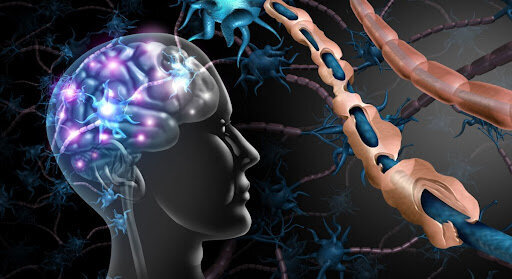World MS Day: building connections to quality care

World MS Day is officially marked on May 30. It brings the global MS community together to share stories, raise awareness, and campaign with everyone affected by multiple sclerosis (MS).
‘Connections’ is the theme for World MS Day 2020-2023. The MS Connections campaign is all about building community connections, self-connection, and connections to quality care.
It is an opportunity to advocate for better services, celebrate support networks, and champion self-care.
In 2009, the MS International Federation (MSIF) and its members initiated the first World MS Day.
Multiple sclerosis is one of the most common diseases of the central nervous system (brain and spinal cord). Today, 2.8 million people around the world have MS.
MS is an inflammatory demyelinating condition. It is caused by damage to myelin – a fatty material that insulates nerves.
In MS, the loss of myelin affects the way nerves conduct electrical impulses to and from the brain. Symptoms can include blurred vision, weak limbs, tingling sensations, unsteadiness, memory problems, and fatigue.
Most people with MS are diagnosed between the ages of 20 and 40. MS is two to three times more common in women than in men. There is no drug that can cure MS, but treatments are available which can modify the course of the disease.
World MS Day activities take place throughout the month of May and in early June. The campaign offers flexibility for individuals and organizations to achieve a variety of goals.
Challenging social barriers and stigma that can leave people affected by MS feeling lonely and isolated; Building communities that support and nurture people affected by MS; Promoting self-care and healthy living with MS; Lobbying decision makers for better services and effective treatment for people with MS; and Connecting people affected by MS-to-MS research are the World Day objectives.
In 2005, MS was included among rare and special diseases and is supported by the Ministry of Health.
Registration and census systems have been launched to draw up general policies in the diagnosis, treatment, and rehabilitation of patients, as well as academic MS committees, to confirm the disease and address issues.
Amir-Hesam Alirezaei, a Health Ministry official, has said some 95,000 MS patients have been so far identified in the country.
Currently, the largest number of MS patients are in the provinces of Isfahan, Fars, and Tehran, he added.
The prevalence of the disease is still 2.5 times higher in women than in men and in the age group of 20 to 45 years.
According to global statistics, the average prevalence of MS is 112 people per 100,000 people in the world. In Iran, the prevalence of MS is equal to 111 patients per 100 thousand population. So, Iran is among the countries with a high prevalence of MS.
In recent decades, the prevalence rate has increased in the country, especially in urban areas.
This issue indicates the importance of diagnosing and controlling the disease in young and middle-aged people, considering its moderate to high prevalence.
On average, about 5 thousand patients are added to the population of patients in the country every year.
“Currently, there is no problem with domestically produced Iranian drugs, and we sometimes have a shortage of imported drugs due to sanctions, which has now been eliminated,” Alirezaei said.
The provision of the newest drugs used by patients (monoclonal antibodies) with high efficacy is emphasized by the Ministry of Health.
Support for patients in the form of financial packages is compiled and communicated by obtaining opinions from scientific advisory committees.
It is aimed to reduce the financial burden of patients with the support coverage of basic insurance funds for special and rare diseases.
The budget allocated to support patients with rare diseases has increased by 40 percent.
A sum of 50 trillion rials (about $100 million) was allocated in the past Iranian calendar year that ended on March 20, IRNA reported, adding that the figure rose to 70 trillion rials this year.
According to the statistics published in 2019, the number of rare diseases identified in Iran has reached 332 types of diseases, and about 4,750 people are covered by the Rare Diseases Foundation of Iran.
The National Document on Rare Diseases was approved in December 2020, with the aim of preventing the birth of infants with rare diseases and therapeutic problems.
Patients with rare diseases launched and signed a petition calling for drawing up a national document on rare diseases on the occasion of Rare Disease Day, February 28, 2019.
The main vision of this document is to prevent the birth of infants with rare diseases and to solve the medical and therapeutic problems of rare patients in the country.
A total of 107 hard-to-treat diseases are currently under health insurance coverage, Mohammad-Mehdi Nasehi, the managing director of Iran Health Insurance Organization, has said.
He made the remarks in a meeting with Ahmed al-Mandhari, the World Health Organization director for Eastern Mediterranean Region, IRNA reported.
Some 20 million people in villages across the country are covered by the Health Insurance Fund and the government pays most of the treatment costs, Nasehi added.
Leave a Comment